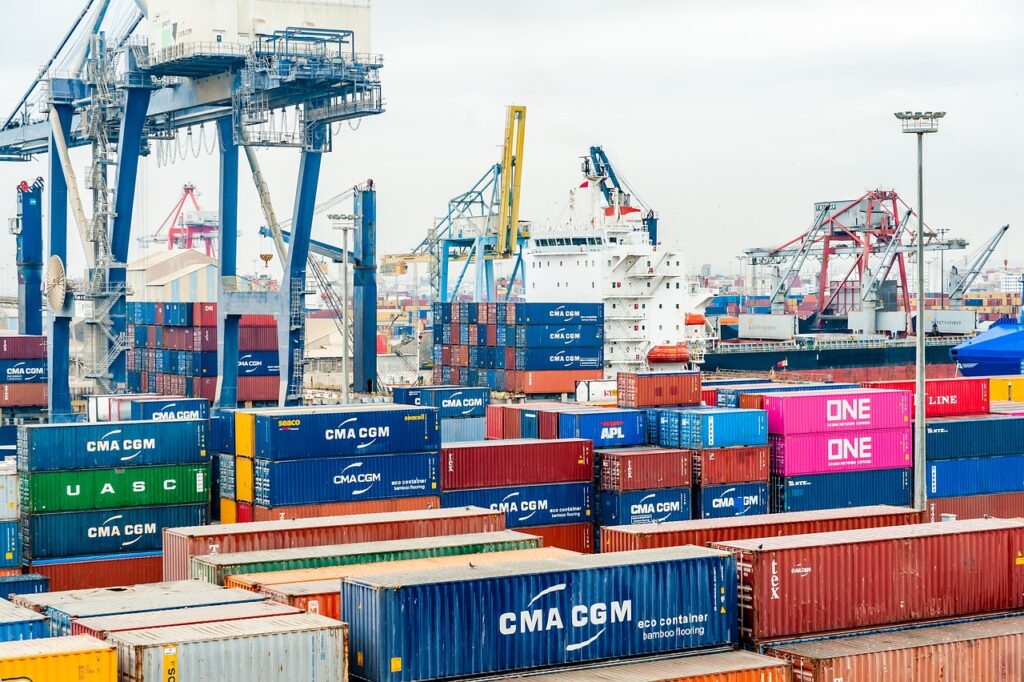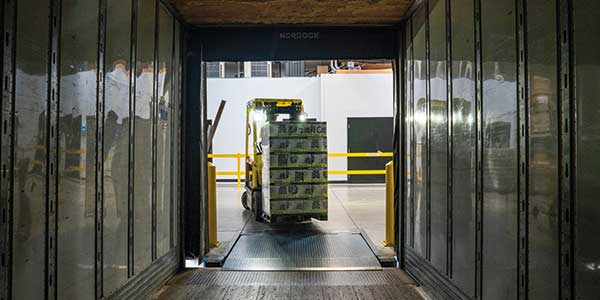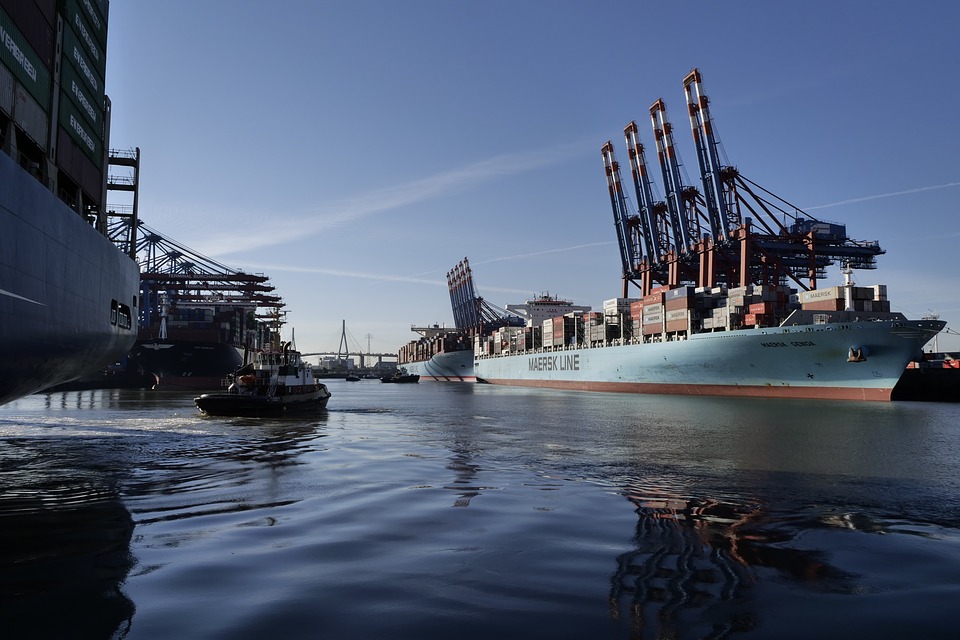Logistics terms
5 special logistics terms you must know: and how they work in practice!
The logistics sector is full of jargon and abbreviations that professionals can’t avoid. Whether you work as a warehouse manager, freight forwarder, supply chain planner, or transport coordinator, it’s important to understand the language of logistics. Some terms may initially sound complex but turn out to be surprisingly applicable and valuable in practice.
Logistics terms

In this blog, we highlight five striking or lesser-known logistics terms. Not dry definitions, but clear explanations and real-life examples in which a WMS, TMS, or FMS plays a key role. This not only clarifies the term’s meaning but also why it’s relevant in your daily logistics processes.
Looking for a complete overview of logistics terms? Then be sure to also check out the Logistics ABC from Adaption on our website: a handy reference for everyone in the industry:
1. Bill of Lading (B/L)
The passport of the cargo
The Bill of Lading is one of the oldest and most essential documents in logistics. You can see it as the passport of the cargo: it describes what is being transported, from where to where, and who owns it. It also serves as a receipt for the carrier and as proof of ownership of the goods.
There are different forms of a Bill of Lading, such as a Straight B/L (for non-transferable goods) or a Negotiable B/L (which allows ownership to be transferred). In international trade, this document is crucial, especially for sea freight.

Practical example
A trading company imports electronics from China. Once the container leaves the port, the Bill of Lading is generated. The company uses a Forwarding Management System (FMS) to automatically link these documents to shipments. This gives all parties involved, from carrier to buyer, real-time insight into the status and ownership of the goods. This prevents delays and simplifies customs clearance.
2. Cold Chain

Temperature-controlled logistics
The Cold Chain refers to the process of transporting and storing temperature-sensitive products under controlled conditions. Think of medicines, fresh food, or flowers. These are products that can spoil or lose effectiveness with temperature deviations.
An effective cold chain requires precise monitoring, quick response, and collaboration between different links in the chain.
Practical example
A pharmaceutical company delivers vaccines to hospitals across Europe. These vaccines must be kept between 2°C and 8°C. A Transport Management System (TMS) is used to plan trips so that transport time is minimized, with integrated real-time temperature monitoring. In case of deviations, the system immediately sends alerts so corrective action can be taken. This ensures the products arrive in perfect condition and meet strict regulations.
3. Demurrage
When idle time costs money
Demurrage is a logistics term that refers to the extra costs incurred when a container or cargo stays longer than agreed at a terminal. This can happen, for example, if documents aren’t ready in time or the recipient isn’t ready to unload. These costs can add up quickly and are often a pain point in international logistics.

Practical example
A distributor of consumer electronics regularly receives goods through the port of Rotterdam. Due to delays in customs clearance, a container stays two days longer at the terminal than allowed. Demurrage charges quickly add up. Thanks to a Forwarding Management System (FMS), the logistics manager automatically receives a warning if a container risks standing still too long. This enables proactive coordination with the carrier or customs to avoid unnecessary costs.
4. Value Added Logistics (VAL)

More than just storage and transport
Value Added Logistics refers to additional logistics services that add value to products during storage or distribution. These are activities beyond the basics — such as simple transport or storage — and specifically address customer needs. Think of labeling, repackaging, assembly, or temperature control like heating and cooling goods.
These kinds of services are especially interesting for companies dealing with temperature-sensitive products or specific quality and shelf-life requirements. And more importantly: many VAL activities can be charged separately, making them not only operationally valuable but also commercially attractive.
Practical example
A cosmetics wholesaler supplies products to stores across Europe. Some products, such as skincare, must not be stored or transported too cold. During the winter months, the logistics service provider therefore offers heating as an additional service using a Warehouse Management System (WMS). In the warehouse, goods are stored in heated zones, and heated vehicles are used for transport. This service is billed separately and is a clear example of how VAL contributes to customer satisfaction and additional profit margin.
5. 1PL, 2PL, 3PL en 4PL
The evolution of logistics services
In logistics, you often hear terms like 3PL or 4PL. These abbreviations refer to different levels of logistics services, from companies managing their own transport to partners who oversee the entire supply chain. A handy overview:
1PL (First Party Logistics)
The producer or seller does everything themselves. Think of a farmer who brings their potatoes to market. No external party is involved in the transport or storage process.
2PL (Second Party Logistics)
Transport is outsourced to a carrier, such as a trucking or shipping company. The rest, like storage or order picking, remains in-house.
3PL (Third Party Logistics)
A third party takes over multiple logistics processes, such as transport and warehousing. Think of a logistics provider that manages your inventory, picks orders, and ships them.
4PL (Fourth Party Logistics)
A 4PL partner manages the entire logistics chain from A to Z. They usually operate independently of their own assets and coordinate multiple 3PL partners.
Practical example
A large e-commerce company works with a 4PL partner to manage logistics across Europe. The 4PL partner uses an integrated TMS and FMS to coordinate various carriers and storage locations. This allows the company to focus on sales and customer service while the complete supply chain is managed efficiently and transparently.

Conclusion
The world of logistics is full of jargon and abbreviations that may seem complicated at first but actually bring clarity and structure in practice. Terms like Bill of Lading, Cold Chain, or Value Added Logistics not only describe processes but also show where smart use of systems like a WMS, TMS, or FMS can truly make a difference.
Want to dive deeper or looking for a complete overview of logistics terms? Then take a look at the Logistics ABC from Adaption on our website. There you’ll find clear definitions and useful explanations for dozens of logistics terms.
Want to improve your logistics?
Curious how our smart software can support your logistics processes? At Adaption, we’re happy to help with integrated solutions for warehouse, transport, and forwarding management. Feel free to contact us for more information or request a free demo.